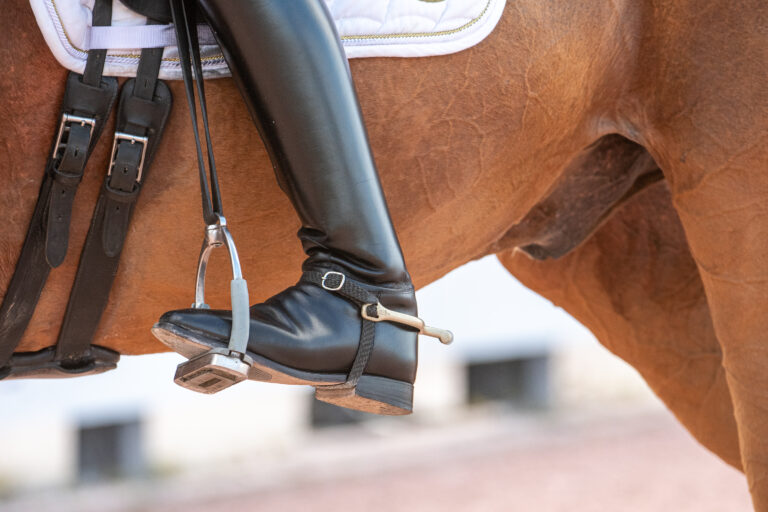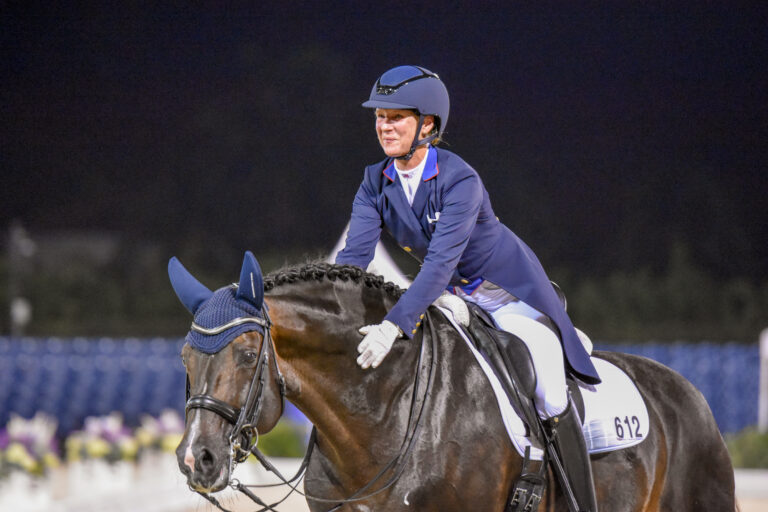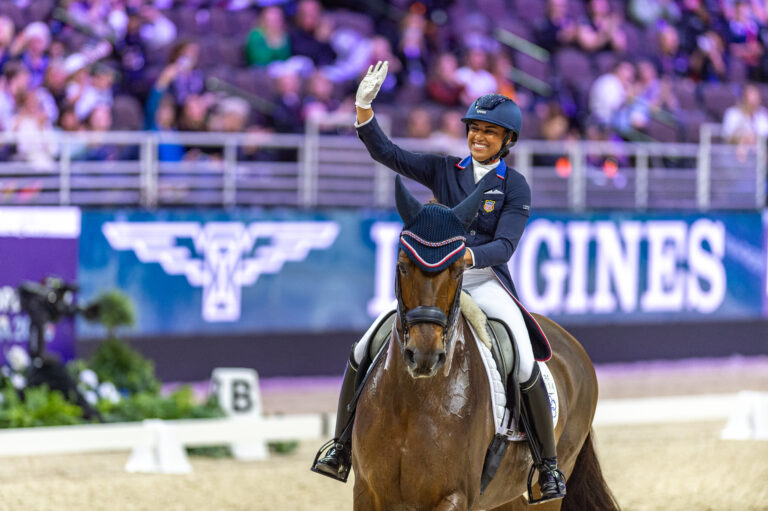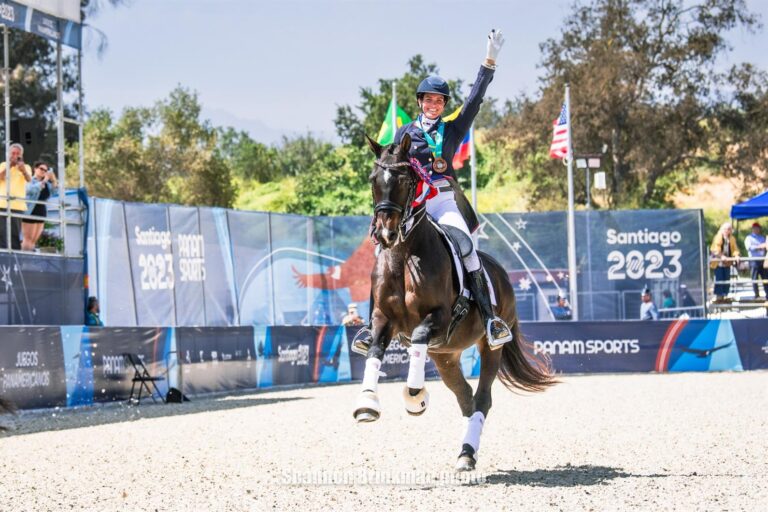Sabine Schut-Kery was upbeat and positive during her time at the U.S. Equestrian’s Dressage Mandatory Observation Event held from June 9 through June 11 at the Palm Beach International Equestrian Center in Wellington, Florida. She and the 15-year-old Hanoverian stallion, Sanceo, owned by Alice Womble and and Dr. Mike Heitmann, had two consistent rides, which earned them a spot on the U.S. Dressage Team destined for Tokyo. This is a dream come true for Sabine, who spoke recently with Stephanie Ruff about her talented partner.
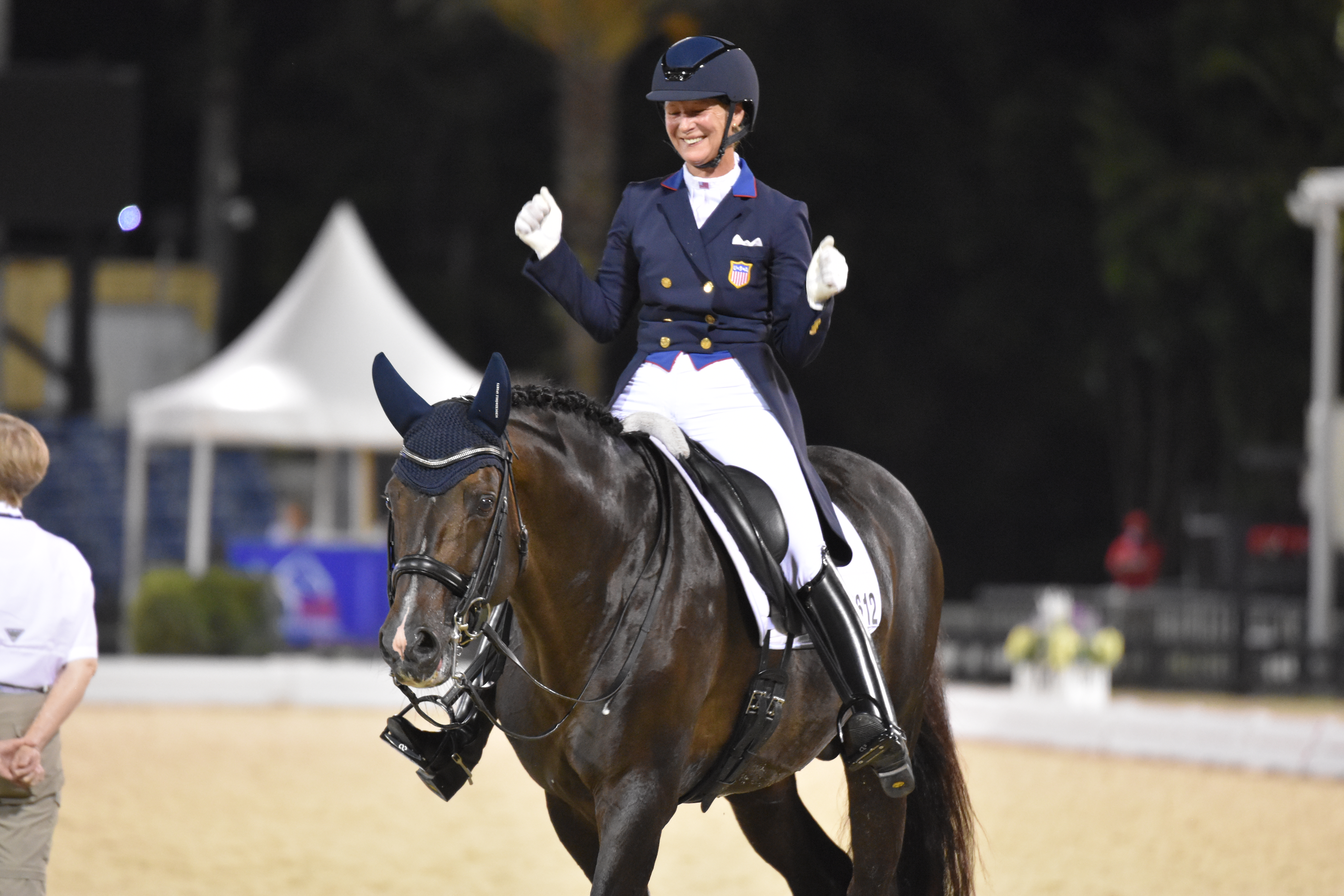
Stephanie Ruff: Does Sanceo have a barn name?
Sabine Schut-Kery: No, it’s Sanceo. It’s a hard one to make a nickname, but I think his name is beautiful.
Stephanie Ruff: Do you have a specific health care or management routine for him?
Sabine Schut-Kery: His owners, Alice Womble and Dr. Mike Heitmann, got him his own aqua tread for cross training. It takes off a little bit off the concussive work. He does TheraPlate and a little bit laser therapy, and then I have a good vet and a good farrier.
Stephanie Ruff: How often does he do the aqua tread?
Sabine Schut-Kery: Usually two or three times a week. And he actually really likes it.
Stephanie Ruff: Is he also a breeding stallion?
Sabine Schut-Kery: Yes. He’s approved with the Hanoverian and the Oldenburg registries.
Stephanie Ruff: Does that provide any challenges for you?
Sabine Schut-Kery: No, and luckily his owners are very dedicated to what we’re producing in the ring and try to keep his focus on that. In 2015, after he was on the Pan-Am team, we bred him and I was a little bit worried, but it didn’t change a thing. You just never know. He can be very stallion-ish. Some of them are not. He definitely is, but luckily the breeding did not influence anything.
Stephanie Ruff: How did you come to ride him?
Sabine Schut-Kery: I had one of Alice’s stallions named Cacique in training. I got him when he was already eight, I believe. I qualified him for the Gladstone Festival of Champions at the small tour. Alice was so happy with the work I did. I remember her saying, “I really want to know what you can do when you have a horse from the beginning that you form and grow with together. Let’s get a young one. That will be fun.”
I went to Germany and did a pre-selection, but I didn’t find anything. He was the last horse I saw before I went home. He was at the end of his two-year-old year, and he was three times under saddle. I was not comfortable getting on, but I knew Alice and Mike were going to want to see him before making a final decision. So, we went back, I think, three weeks later, and I hopped on because I said that’s a must. I needed to feel it. I sat on him just a couple of minutes, and I’m like, that’s the one. He gave such a nice feeling.
Stephanie Ruff: What is his personality and demeanor like?
Sabine Schut-Kery: He’s very sweet, but I think also I think, we form them also a little bit. A lot of people always say he’s so polite, but there is a stallion in there. I keep an eye on things, and I don’t set him up to make poor decisions. I’m very careful about that, but that doesn’t mean I’m isolating him. For example, he can go nose to nose with his neighbor and just play like two geldings. He’s good with that. He’s very sweet, very kind. When I look at his eyes, I just think he’s a happy horse – like he has a smile on his face.
When he’s stalled, I also do a lot of hand walking with him and hand grazing, especially now during this important time. Unfortunately, right now I don’t turn him out so there’s a lot of hand grazing involved, and he just loves to look around. He can stand there. This season, I would teach, and there was grass around me, and I would just have him there. He would graze, or he would watch the horses in the ring and stand still. That’s also how I judge that he’s content.
Stephanie Ruff: What is he like to ride?
Sabine Schut-Kery: He’s really fun. He’s a worker and a pleaser, and I think that goes back to his personality. He’s intelligent, and he’s a thinker. I like that. He’s sweet. He’s kind, and he’s a little cheeky with his being a stallion. He definitely tries to get away with little things, so it’s nice that he has that personality. One thing he’s not is an arguer. If you tell him, “No, we can’t do that” he says, “Oh, okay,” and he’s right back with you.
I would call him a little workaholic. He just goes and works. He’s sensitive, which is nice. For example, I’ve had horses before where I would have to worry about the heat, but he’s such a worker. Obviously, I sometimes feel bad for him, for us, that we have to work in such hot weather, but he has the energy and he’s so athletic it’s not a problem.
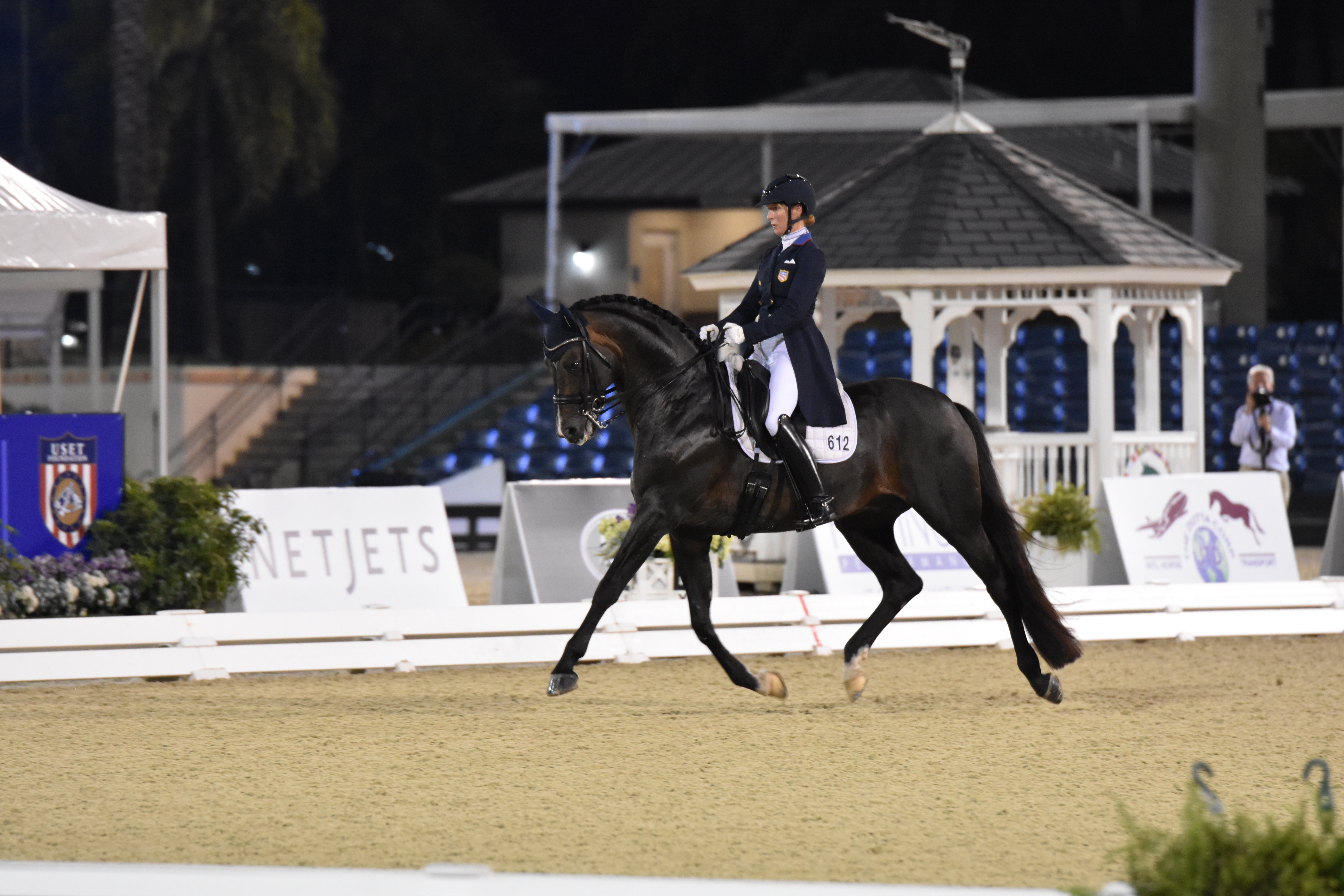
Stephanie Ruff: What are his strengths in the ring?
Sabine Schut-Kery: I think definitely the movements with the “p’s” – piaffe, passage and pirouette. Overall, I think a strength is how he flows from one movement to another. The connection, I think, is a good strength for him. We all strive always to have a horse in front of our leg, but he’s nice into the hand. He’s supple and not a horse that fights you or argues or is strong or bracey.
Stephanie Ruff: What are what are one or two things that training wise that you’ve done with him that’s really helped him get to where he is?
Sabine Schut-Kery: There are two things that I feel very fortunate to have. One is that I’ve had Sanceo for 12 years now. Alice and Mike put him with me and were that committed. Also, I have been with my coach and mentor Christine Traurig for 12 years. That’s something really close to my heart, and I think that’s beautiful.
And now, Debbie (McDonald) comes in. She has been in and out over the years. Sanceo was in the developing horse program when Debbie was the coach, so she knows him well. I’ve trained a lot with her as well, even one full season.
And now it’s about taking it to that next level to get to the scores that U.S. Dressage wants to think about to get the medal. We need to get to the mid to high seventies towards 80. That’s a whole new concept. We need the precision that goes into that, what brings those scores and the balance between what it feels like in the saddle and what it looks like to the judge. It’s always about making it better and being able to put that extra brilliance and performance on top of your basic training and performance.
Finally, I wouldn’t be anywhere without Sanceo’s owners. It’s amazing the trust they have in me because they live in Texas, and I live in California. Being here (at the Observation Event) and doing all of this, I just have to pinch myself. It would not be possible without them.
For more exclusive international dressage updates with Vita Flex (http://bit.ly/vita-flex-pro_tokyo) leading up to and including the Games, visit dressagetoday.com/summer-games-2021.


